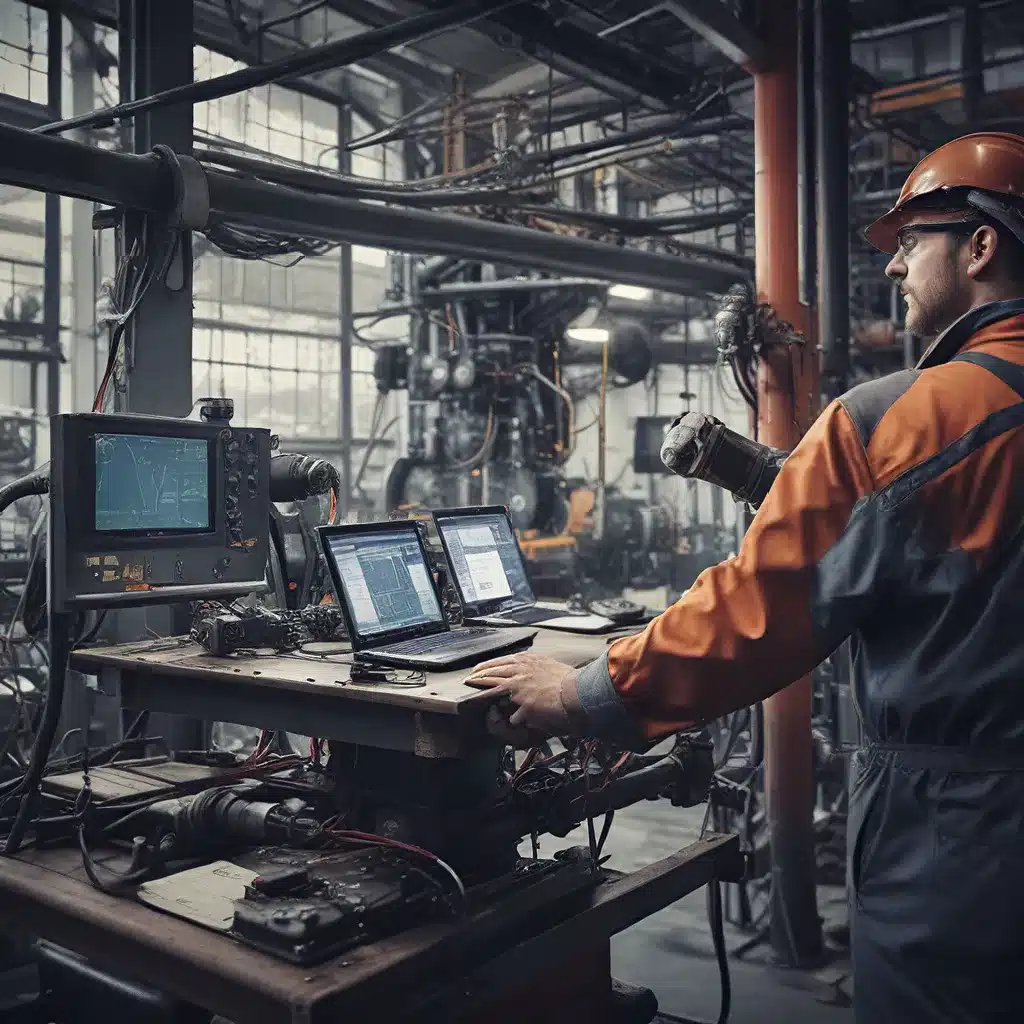
In the rapidly evolving world of manufacturing, the Industry 4.0 revolution has ushered in a new era of unprecedented efficiency, productivity, and sustainability. At the heart of this transformation lies the Industrial Internet of Things (IIoT), a powerful ecosystem of interconnected sensors, devices, and analytics that are redefining the way we approach industrial operations.
Sensor Networks: The Foundation of Predictive Maintenance
One of the key applications of IIoT that is driving significant impact in the manufacturing sector is predictive maintenance. By strategically deploying a network of sensors throughout industrial facilities, manufacturers can now gather a wealth of real-time data on the performance, condition, and usage patterns of their critical assets.
Sensors and analytics play a crucial role in ensuring product quality and workplace safety, while simultaneously fueling innovation and sustainability efforts. These sensor networks continuously monitor various parameters, such as vibration, temperature, pressure, and energy consumption, to provide early warning signs of potential equipment failures or maintenance issues.
Unlocking the Power of Data-Driven Insights
The data collected by these sensor networks is then processed and analyzed using advanced analytics and machine learning algorithms. By identifying patterns, anomalies, and trends in the data, predictive maintenance systems can accurately predict when equipment is likely to fail or require servicing, enabling proactive maintenance interventions.
This data-driven approach has revolutionized the way manufacturers approach maintenance, shifting from a reactive, time-based approach to a more proactive, condition-based strategy. By minimizing unplanned downtime and optimizing the use of resources, predictive maintenance has become a key driver of operational excellence in the manufacturing industry.
Enhancing Efficiency and Competitiveness
The integration of sensor networks and predictive maintenance within the broader IIoT ecosystem has unlocked a multitude of benefits for manufacturers. These technologies not only improve efficiency and productivity but also enhance safety, quality, and sustainability across the entire manufacturing value chain.
By embracing the power of IoT technologies, manufacturers can minimize downtime, reduce maintenance costs, and optimize resource utilization, all while ensuring the highest levels of product quality and workplace safety. This, in turn, helps them stay competitive in an increasingly dynamic and demanding market.
Navigating the Challenges of Sensor Network Design
Designing and implementing an effective sensor network for predictive maintenance, however, is not without its challenges. Manufacturers must carefully consider factors such as network topology, communication protocols, power management, and data security to ensure the reliability, scalability, and resilience of their IIoT systems.
Network topologies, such as mesh, star, or hierarchical configurations, each offer unique advantages and trade-offs in terms of coverage, reliability, and energy efficiency. Similarly, the choice of communication protocols, such as Wi-Fi, Bluetooth, or LoRaWAN, depends on the specific requirements of the industrial environment, including range, data rate, and power consumption.
Ensuring Robust Security and Energy Efficiency
As the manufacturing sector becomes increasingly interconnected, the security of sensor networks and IoT devices has become a critical concern. Manufacturers must implement robust encryption, access control, and software updates to protect their systems from cyber threats and ensure the integrity of their data.
Moreover, the energy consumption of sensor networks is a crucial factor, as many industrial facilities are located in remote or hard-to-access areas. Energy-efficient sensor design, energy harvesting techniques, and smart power management strategies are essential to ensure the long-term sustainability and reliability of predictive maintenance systems.
The Future of Sensor-Driven Predictive Maintenance
As the Industry 4.0 revolution continues to gain momentum, the role of sensor networks and predictive maintenance in the manufacturing sector is poised to become even more vital. Emerging technologies, such as 5G, edge computing, and digital twins, are further enhancing the capabilities of IIoT systems, enabling real-time data processing, advanced analytics, and virtual simulation of industrial operations.
The future of manufacturing is undoubtedly connected, data-driven, and sensor-powered. By embracing the transformative potential of IIoT and predictive maintenance, manufacturers can unlock new levels of efficiency, productivity, and competitiveness, positioning themselves for success in the digital age.
Conclusion
The Industrial Internet of Things has ushered in a new era of predictive maintenance in the manufacturing sector, where sensor networks and data-driven insights are revolutionizing the way industrial operations are managed. By leveraging the power of connected sensors, advanced analytics, and energy-efficient designs, manufacturers can minimize downtime, optimize resource utilization, and ensure the highest levels of product quality and workplace safety.
As the industry continues to evolve, the integration of emerging technologies, such as 5G and digital twins, will further enhance the capabilities of sensor-driven predictive maintenance, enabling manufacturers to stay ahead of the curve and thrive in the dynamic, IoT-powered landscape of Industry 4.0.